
Roots
To gaze upon a single strand of textured hair is to confront a living lineage, a vibrant testament to journeys both individual and collective. Within each coil, each wave, each intricate bend, resides the whisper of generations, a story passed down through the very fiber of our being. This exploration journeys into the profound intersection where ancient wisdom, passed through the diaspora, converges with the discerning eye of modern science, seeking to understand how the very methods revered by our ancestors find their staunch backing in contemporary understanding. It is a quest not merely of validation, but of reconnection, of understanding the enduring genius held within time-honored practices.
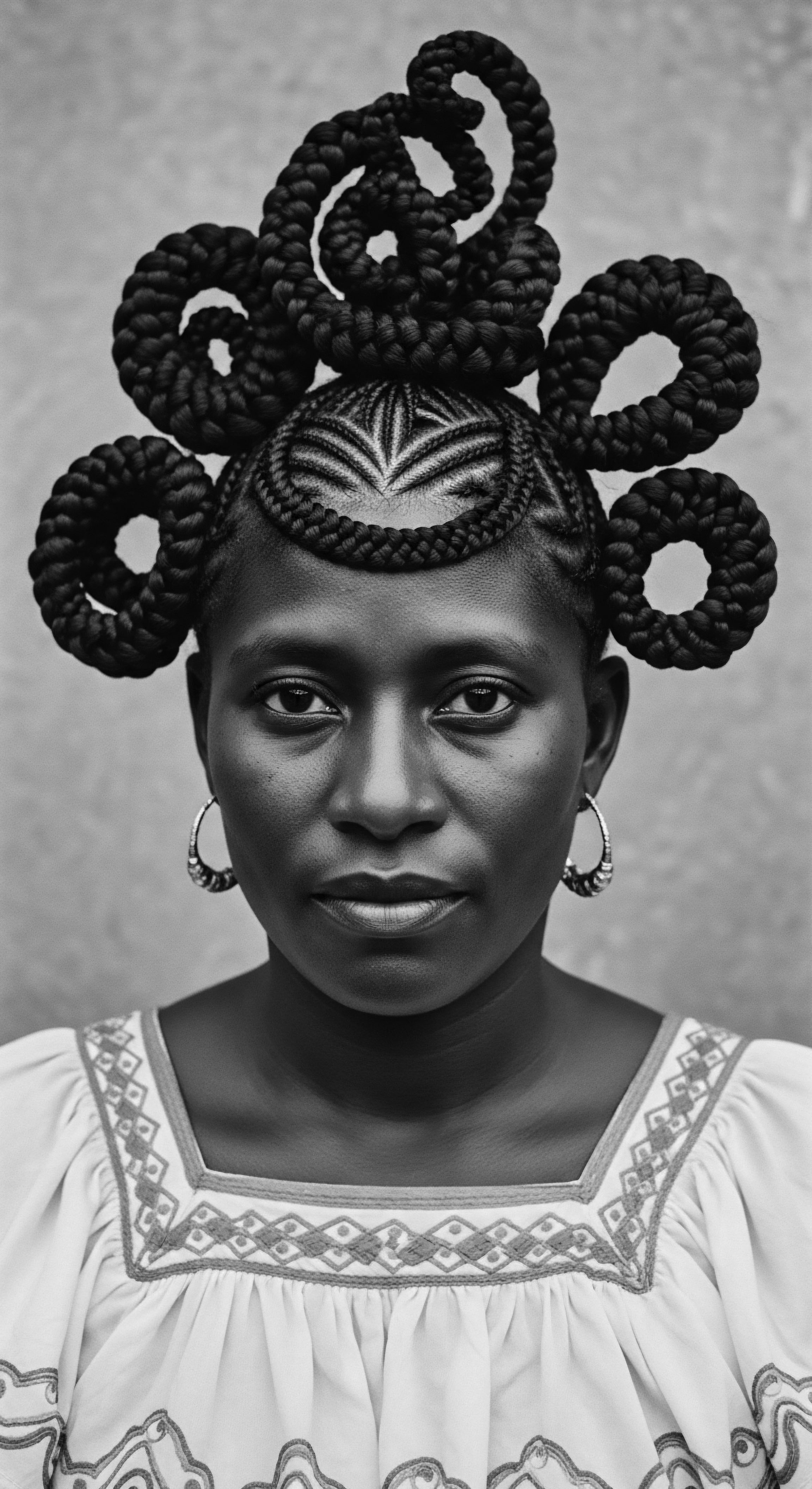
The Helix Unveiled
The distinct morphology of textured hair sets it apart, granting it both its remarkable beauty and its unique care requirements. At its core, the hair shaft is a complex protein filament, primarily composed of keratin. For those with coils and curls, this filament takes on an elliptical or flattened cross-section, a departure from the more circular cross-section often seen in straight hair. This structural variation dictates how the hair grows from the follicle, causing it to curl or coil as it emerges.
The cuticle, the outermost protective layer, consists of overlapping scales. In textured hair, these scales tend to lift more readily along the curves, creating a surface that, while visually striking, can also be more prone to moisture loss and tangling. This inherent geometry means that practices aimed at sealing the cuticle and retaining hydration are not just beneficial; they are fundamental to maintaining hair integrity.
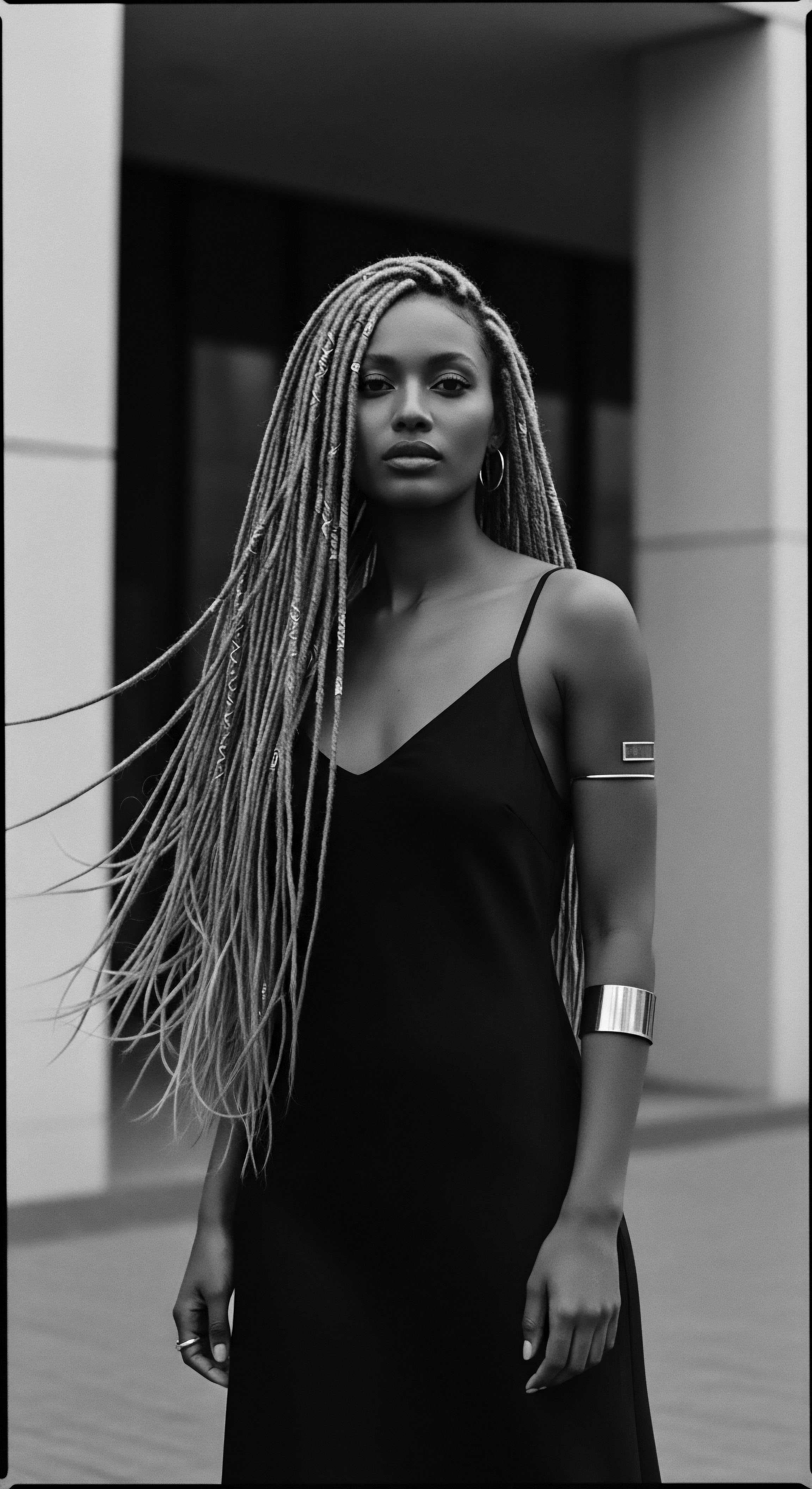
What Ancestral Whispers Inform Our Science?
Long before electron microscopes or chemical analyses, our forebears understood these delicate dynamics through observation and lived experience. They recognized the hair’s tendency to dry, to tangle, to respond to particular treatments. The widespread use of various plant-based oils and butters across African and diasporic communities, from shea (Vitellaria paradoxa) in West Africa to cocoa butter in the Caribbean, speaks to an intuitive grasp of the hair’s need for lubrication and occlusive barriers. These traditional emollients, applied often and generously, formed a protective layer, reducing water evaporation from the hair shaft and guarding against environmental stressors.
This intuitive practice aligns perfectly with modern scientific understanding of lipid barriers in preventing transepidermal water loss, a concept directly transferable to hair fiber health. A study by the American Academy of Dermatology, for instance, documented the superior moisture retention capabilities of hair treated with specific plant oils, mirroring the effects achieved by these ancestral applications (Journal of the American Academy of Dermatology, 2017).
The unique morphology of textured hair, with its elliptical cross-section and more lifted cuticles, inherently prioritizes moisture retention and protective care methods passed down through generations.

Mapping the Curl Pattern
The language used to describe textured hair has evolved, from the informal descriptions of ‘kinky’ or ‘nappy’ – terms often reclaimed from their pejorative past – to more structured classification systems. While modern systems like Andre Walker’s typing (1A to 4C) offer a standardized, albeit sometimes limiting, lexicon, ancestral communities often categorized hair based on visual texture, feel, and even its response to specific care methods. These earlier classifications were often qualitative, steeped in cultural context and the functional needs of hair care, rather than strict numerical grading. The appreciation for the diversity of curl patterns within a community meant that care was often highly individualized, even as core principles remained consistent.
| Traditional Description Soft Coils (often observed in North African or some West African traditions) |
| Potential Modern Structural Link Looser curl patterns (Type 3A-3C), more defined spirals. |
| Traditional Description Dense Spirals (common in many Sub-Saharan African groups) |
| Potential Modern Structural Link Tightly packed coils (Type 4A-4B), with significant shrinkage. |
| Traditional Description Resilient Kinks (often seen in central and southern African lineages) |
| Potential Modern Structural Link Very tight, zig-zag patterns (Type 4C), high density. |
| Traditional Description This table offers a simplified lens through which to view the confluence of ancient observation and contemporary scientific categorization in understanding hair's heritage. |

Echoes in Every Strand
Across the diaspora, a vibrant lexicon emerged around textured hair, reflecting its central place in identity and daily life. Terms varied by region, language, and specific cultural group, yet they shared a common thread ❉ an intimate familiarity with the hair’s properties and the rituals surrounding its care. This language was not merely descriptive; it was prescriptive, guiding individuals on how to interact with their hair.
Think of the concept of ‘combing out’ or ‘finger detangling,’ practices that speak to the hair’s fragile state when dry and its tendency to knot. These are not merely actions; they represent a deep knowing, passed from elder to youth, of hair’s intrinsic nature.
- Wash Day ❉ A ritual of cleansing, detangling, and conditioning, often an all-day affair, signifying a commitment to hair’s cleanliness and health.
- Scalp Massage ❉ The gentle manipulation of the scalp, traditionally using oils or herbal concoctions, recognized for its role in comfort and perceived growth stimulation.
- Protective Style ❉ Any style that minimizes manipulation and exposure to environmental elements, such as braids, twists, or locs, preserving hair length and strength.
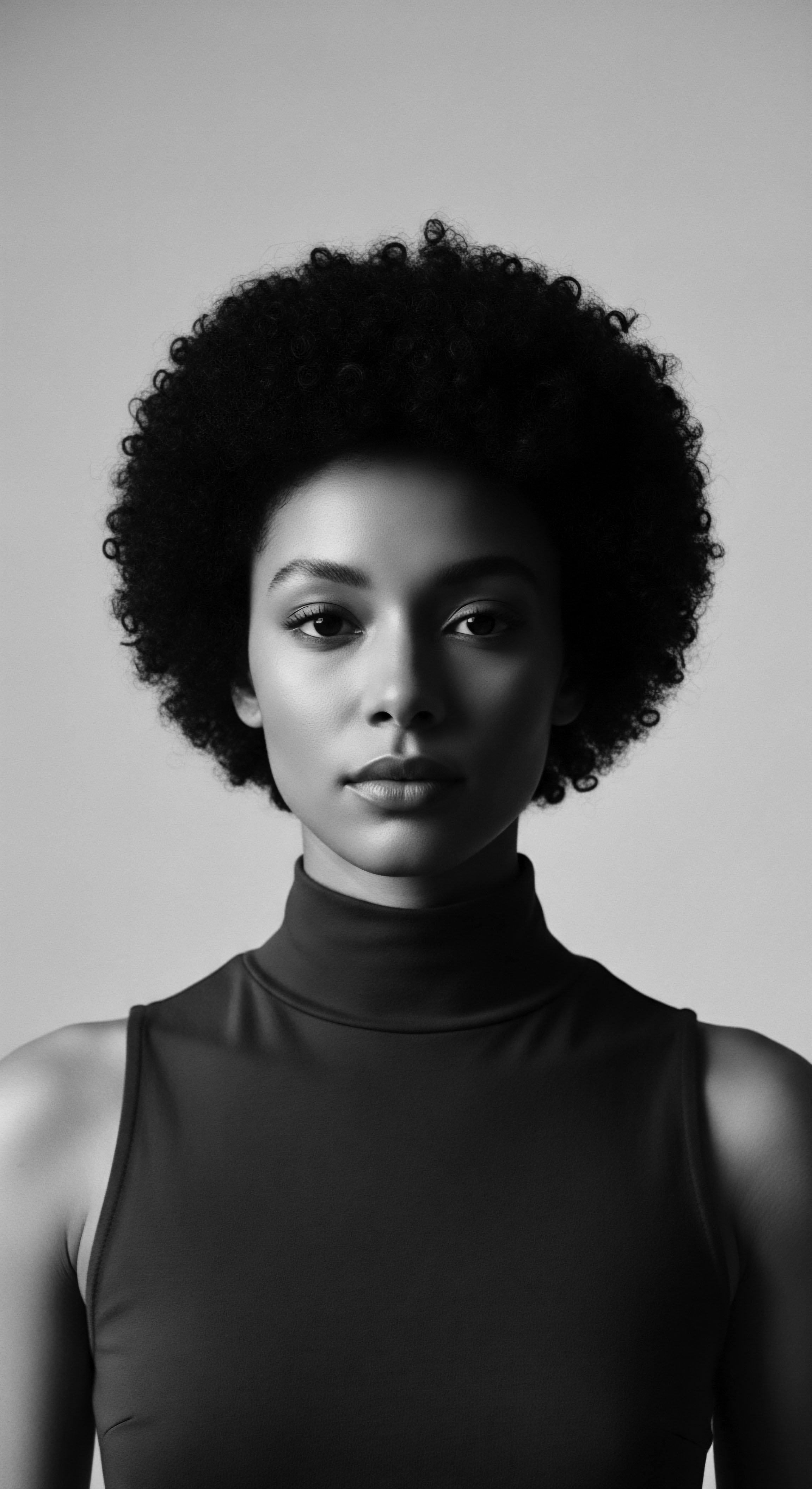
Cycles of Life and Growth
Hair growth follows a cyclical pattern ❉ anagen (growth), catagen (transition), and telogen (resting/shedding). While this biological cycle is universal, traditional care practices, often influenced by environmental factors and nutritional landscapes, adapted to support optimal growth and minimize premature shedding. In regions where harsh sun or arid conditions prevailed, protective styles and the regular application of moisture-retaining substances became essential.
This wasn’t a matter of vanity but survival—protecting the hair from environmental damage that could shorten the anagen phase or cause excessive breakage. The consumption of nutrient-rich, indigenous foods, like diverse leafy greens or healthy fats, also played an unacknowledged but crucial role in providing the essential building blocks for robust hair growth, a connection that modern nutritional science now affirms.
The understanding that hair had seasons, periods of greater strength, and times when it might feel more fragile, was inherent in ancestral care. Women and men alike learned to read the subtle signs of their hair’s condition, adapting their care regimens accordingly. This intuitive observation, passed down through oral tradition and practical demonstration, often mirrored scientific observations about hair cycles and the impact of environmental stressors on follicular health. The concept of ‘resting’ the hair through long-term protective styles or infrequent washing cycles, aligns with the scientific aim of reducing mechanical stress and chemical exposure to prolong hair’s lifespan and health.
Traditional hair care vocabulary and cyclical approaches to hair management mirror scientific understandings of hair growth phases and environmental protection.
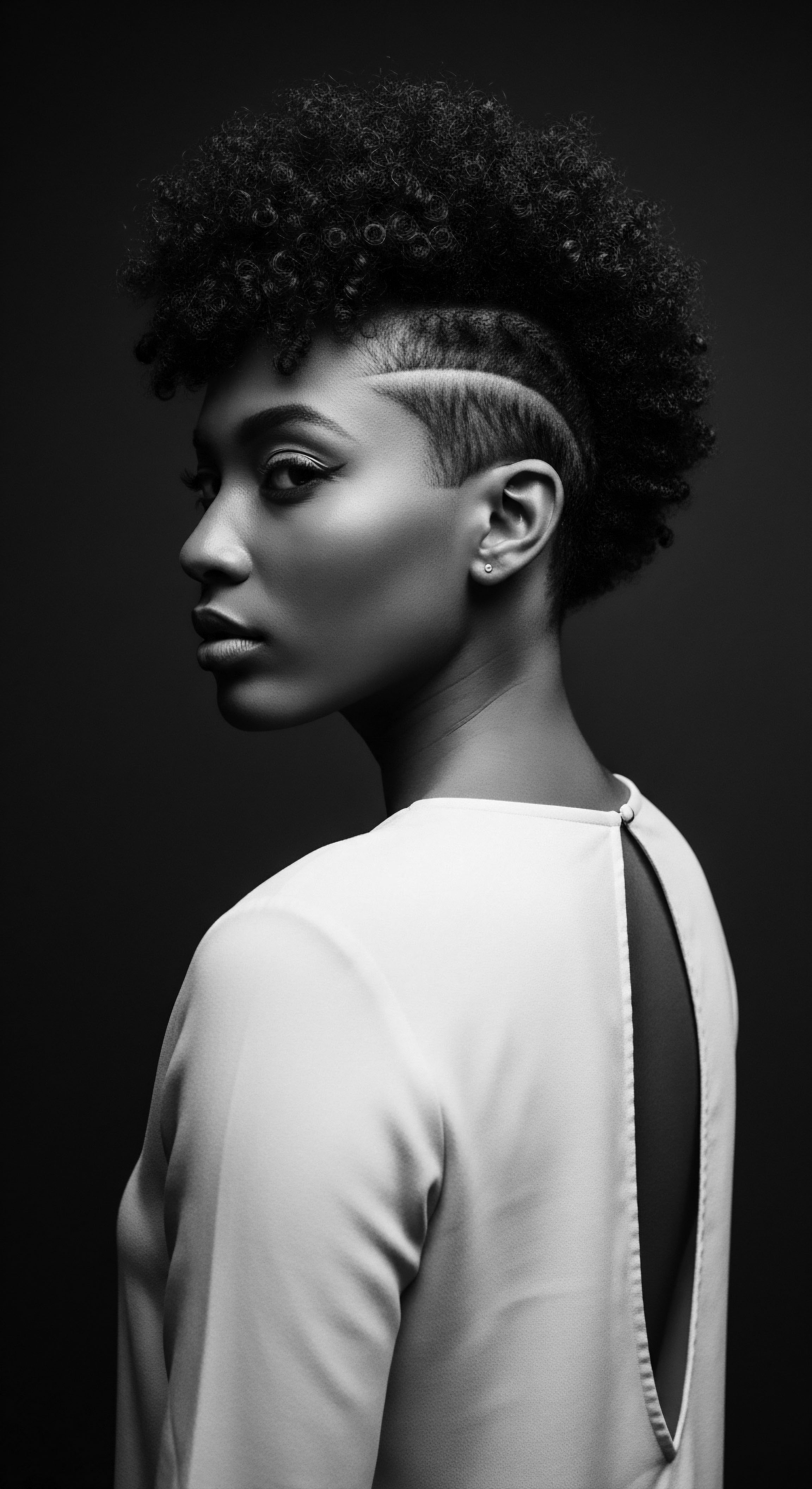
Ritual
From the careful sectioning of hair before braiding to the patient application of herbal pastes, the term ‘ritual’ perfectly encapsulates the intention, repetition, and spiritual resonance embedded within diasporic textured hair care. These were not random acts, but purposeful sequences, each step holding meaning, each motion a communion with self and lineage. Modern science, in its dispassionate pursuit of efficacy, now sheds light on the profound wisdom held within these deeply personal and communal practices, validating their tangible benefits beyond their cultural significance.
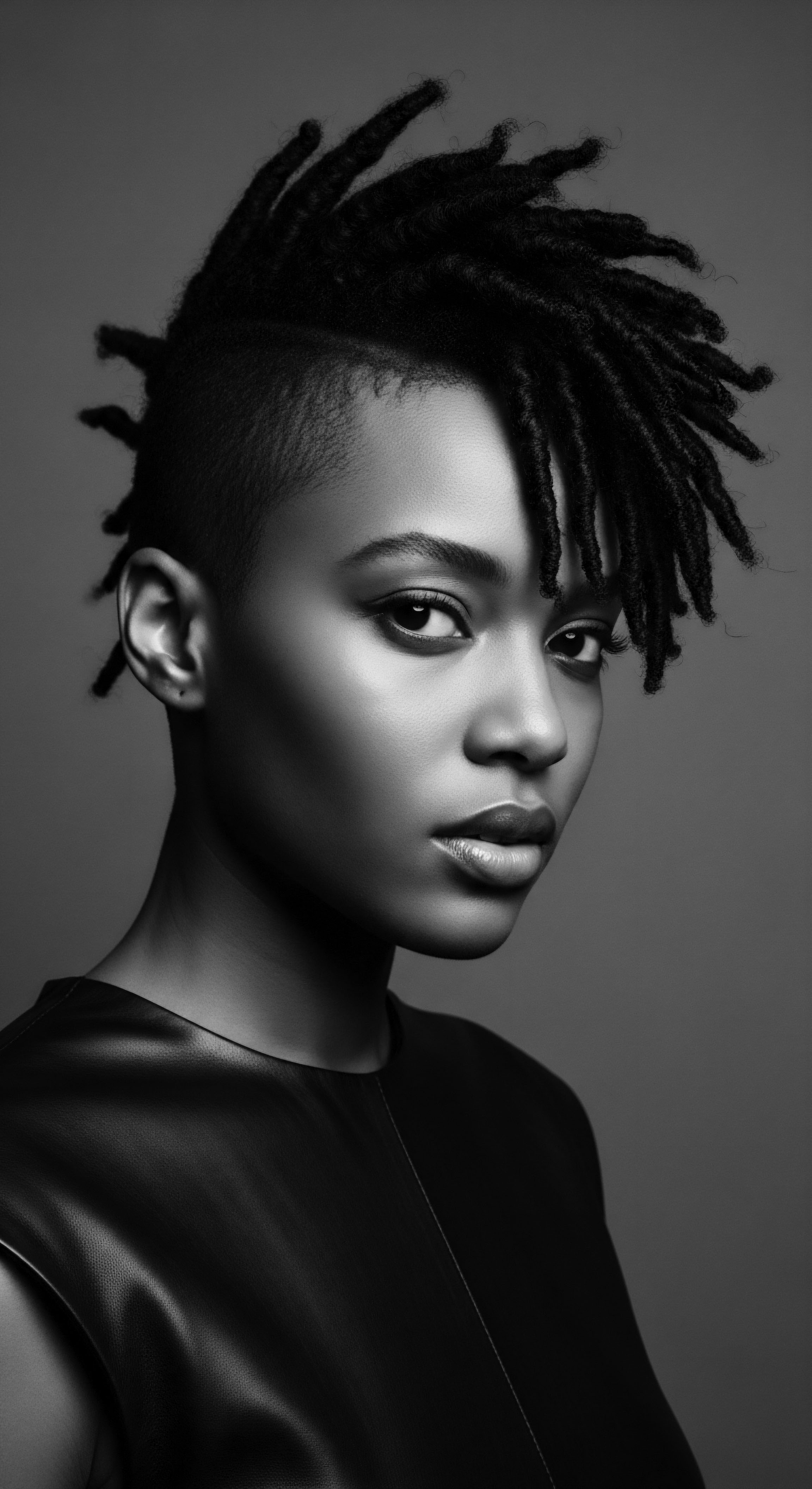
Protective Styling as Ancestral Ingenuity
The practice of protective styling stands as a cornerstone of textured hair heritage. Braids, twists, cornrows, and locs – these styles, far from being mere aesthetic choices, served as sophisticated mechanisms for preserving hair health. Their primary benefit, scientifically speaking, lies in minimizing mechanical stress and environmental exposure.
When hair is braided or twisted, the individual strands are bundled together, reducing friction, preventing tangles, and limiting direct contact with harsh elements like sun, wind, and dry air. This reduction in manipulation drastically lowers the rate of breakage, which is a common challenge for highly coiled hair due to its unique structural vulnerability at points of curvature.

How Does Minimal Manipulation Support Hair Strength?
Hair, particularly textured hair, has a finite lifespan and an inherent fragility. Excessive combing, brushing, or styling can chip away at the cuticle layer, leading to fraying, split ends, and ultimately, breakage. Protective styles act as a natural shield, allowing the hair to ‘rest’ from daily handling. This is particularly crucial for maintaining length, as the rate of breakage can often outpace the rate of growth for textured hair if not properly managed.
The scientific principle at play here is straightforward ❉ less mechanical stress equals less damage. This is why generations have relied on these styles to grow their hair long and strong, a testament to an observational science passed down through generations.
Furthermore, protective styles often involve the application of nourishing oils and butters before or during the styling process. Once applied, these substances are then ‘sealed in’ by the braiding or twisting pattern, allowing for longer contact time with the hair shaft. This sustained presence of emollients and occlusives enhances moisture retention and conditioning, proving more effective than fleeting applications.

The Gentle Art of Cleansing and Conditioning
Traditional cleansing and conditioning practices for textured hair often emphasized gentleness and hydration, recognizing the hair’s tendency towards dryness. Ancestral methods frequently involved rinsing hair with natural infusions, sometimes incorporating mild plant-based cleansers, followed by the generous application of oils and butters. The concept of ‘co-washing,’ or conditioner-only washing, a widely accepted modern practice for textured hair, finds a direct lineage in these methods where harsh stripping agents were avoided in favor of moisture-preserving techniques.
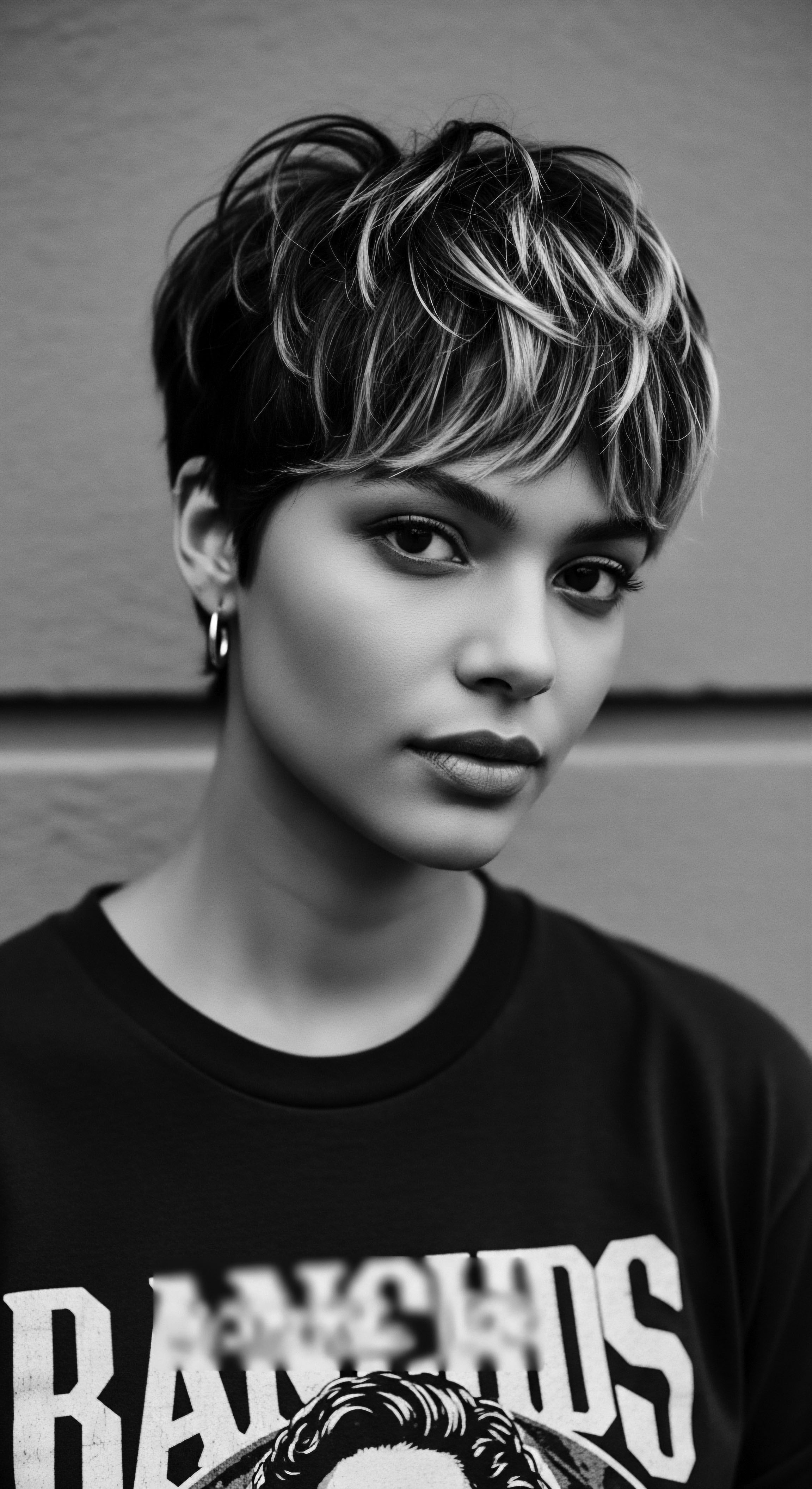
Why Are Oils and Water Vital for Hair Hydration?
Textured hair, by virtue of its coiled structure and lifted cuticles, has a greater surface area and more points along its shaft where moisture can escape. Water is the ultimate moisturizer for hair. Traditional methods often involved wetting the hair before applying oils or butters, or incorporating water-based concoctions. The science confirms this ❉ water hydrates the hair, and oils, as occlusive agents, then help to seal that moisture into the hair shaft.
This ‘LOC’ method (Liquid, Oil, Cream), popularized in modern natural hair communities, is a direct echo of ancient practices that instinctively understood the principle of layering hydrators and sealants. For instance, the use of aloe vera and water to wet the hair, followed by shea butter, is a direct application of this principle seen in various African and Caribbean ancestral traditions.
Traditional protective styles and gentle cleansing practices, including the layering of water and oils, reduce mechanical stress and enhance moisture retention, validating ancestral ingenuity with modern scientific principles.

Tools of the Ancestors and Their Modern Legacy
The tools used in traditional hair care were simple, yet profoundly effective. Wide-tooth combs carved from wood or bone, or even fingers themselves, were the primary instruments for detangling. This choice was not arbitrary.
Modern trichology confirms that wide-tooth instruments cause less friction and breakage when navigating tangles in coiled hair, compared to fine-tooth combs. The very act of finger detangling, a painstaking but gentle process, minimizes strain on the hair shaft and scalp, reducing cuticle damage and hair loss.
- Wide-Tooth Combs ❉ Crafted from natural materials, these tools were essential for gently separating coils without causing undue tension or breakage.
- Fingers ❉ The original detangling tool, offering unparalleled tactile sensitivity to knots and tangles, allowing for maximal hair preservation.
- Hair Picks ❉ Used for lifting and shaping, these were often fashioned from wood or horn, providing volume without excessive pulling.

The Nighttime Sanctuary
The practice of covering hair at night with bonnets, scarves, or head wraps is a profound aspect of diasporic hair care heritage, born from both practical necessity and cultural significance. This ritual protected elaborate styles from disruption during sleep and, more importantly, safeguarded the hair’s moisture balance. Modern scientific understanding confirms that friction from cotton pillowcases can draw moisture from the hair (a phenomenon known as ‘hygral fatigue’) and create mechanical abrasion, leading to frizz, tangles, and breakage.
Silk or satin fabrics, traditionally favored for head coverings where available, significantly reduce this friction, allowing the hair to glide rather than snag. This preserves the cuticle layer, maintains moisture, and prolongs the integrity of styled hair. The science behind this protective measure is clear ❉ a smooth, low-friction surface minimizes damage to the hair shaft, reinforcing the wisdom of centuries of nighttime hair covering.
Nighttime hair coverings, especially those made from smooth materials, protect hair from friction and moisture loss, a practice deeply rooted in ancestral wisdom and validated by textile science.

Relay
The transmission of textured hair care methods across the diaspora is a testament to cultural resilience and adaptive wisdom. These practices, often dismissed by dominant beauty norms, represent a sophisticated body of knowledge. Today, scientific inquiry and academic scholarship are meticulously dissecting these traditions, revealing the intricate biophysical mechanisms at play and elevating ancestral practices from mere custom to validated science. This intellectual relay, connecting past ingenuity with present understanding, deepens our appreciation for a heritage woven into every strand.

The Biophysics of Hair Health and Traditional Practices
Understanding the unique biophysical properties of textured hair provides the scientific bedrock for validating traditional care methods. The hair fiber’s elasticity, strength, and moisture content are profoundly impacted by its coiled geometry. Due to the twists and turns, stress distribution along the hair shaft is uneven, rendering it more susceptible to fracture points. Traditional practices, such as consistent moisture application and minimal manipulation, directly address these vulnerabilities.
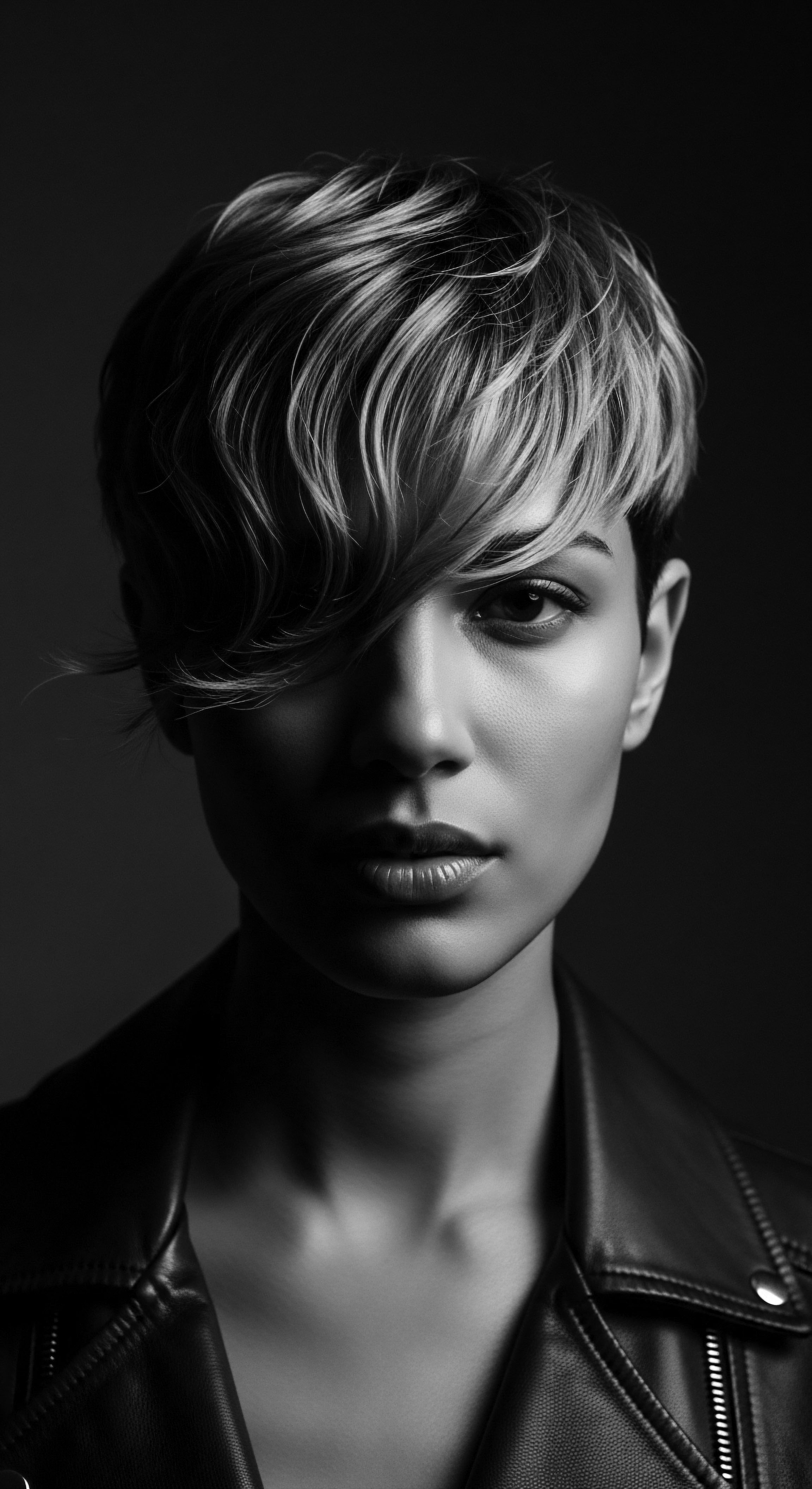
How Does Coiled Structure Influence Hair’s Susceptibility to Damage?
The helical nature of coiled hair means that it experiences more internal friction and stress during styling or even simple movement. The cuticle scales, designed to lie flat, are inherently more exposed at the apex of each curve, making them prone to lifting and damage. This can lead to increased porosity, where the hair struggles to retain moisture. Traditional deep conditioning, often involving prolonged treatments with natural ingredients like plant oils or honey, works to temporarily smooth these lifted cuticles and deposit conditioning agents.
The occlusive properties of oils help create a barrier, preventing excessive water uptake and loss, a critical factor for hair with a higher tendency toward hygral fatigue. Modern research on hair fiber mechanics continues to quantify these effects, proving that the principles underpinning ancestral conditioning are sound. (Robins, 1994, p. 78).
Consider the age-old practice of using natural ingredients like mucilaginous plants such as aloe vera or flaxseed gel. These botanicals are rich in polysaccharides that coat the hair, providing both slip for detangling and a flexible film that can help reduce moisture evaporation. The scientific analysis of these plant extracts reveals their humectant and emollient properties, confirming what generations already knew from direct observation ❉ these substances make hair more manageable and retain hydration.

The Chemical Composition of Ancestral Ingredients
Many traditional hair care concoctions utilized readily available botanicals, whose chemical compositions are now subject to rigorous scientific scrutiny. For instance, the widespread use of oils like coconut, olive, and castor oil across diasporic communities for scalp health and hair conditioning is now supported by data on their fatty acid profiles and penetrative abilities.
- Coconut Oil ❉ Unique among oils, its small molecular structure and specific fatty acid profile (primarily lauric acid) allow it to penetrate the hair shaft, reducing protein loss during washing.
- Shea Butter ❉ A rich emollient, it contains high concentrations of oleic and stearic acids, forming a protective barrier on the hair surface, preventing moisture escape.
- Rosemary and Peppermint ❉ Used in various infusions for scalp stimulation, these herbs contain compounds like rosmarinic acid and menthol, known for their circulatory and anti-inflammatory properties that can support follicular health.
The knowledge of which plants to use, how to prepare them (e.g. infusions, decoctions, macerations), and when to apply them was a complex, orally transmitted science. This deep material knowledge, honed over centuries, meant that these communities were, in essence, practicing phytochemistry and pharmacology long before formal scientific disciplines existed.

Microbial Balance and Scalp Health Rituals
A healthy scalp is the foundation for healthy hair, a principle well-understood in ancestral traditions. Various traditional rituals centered on scalp cleansing, exfoliation, and the application of tonics. Practices like regular scalp massage, sometimes with herbal concoctions, were not just for relaxation. From a scientific standpoint, scalp massage can improve blood circulation to the hair follicles, potentially enhancing nutrient delivery and waste removal, thereby supporting the anagen phase of hair growth.
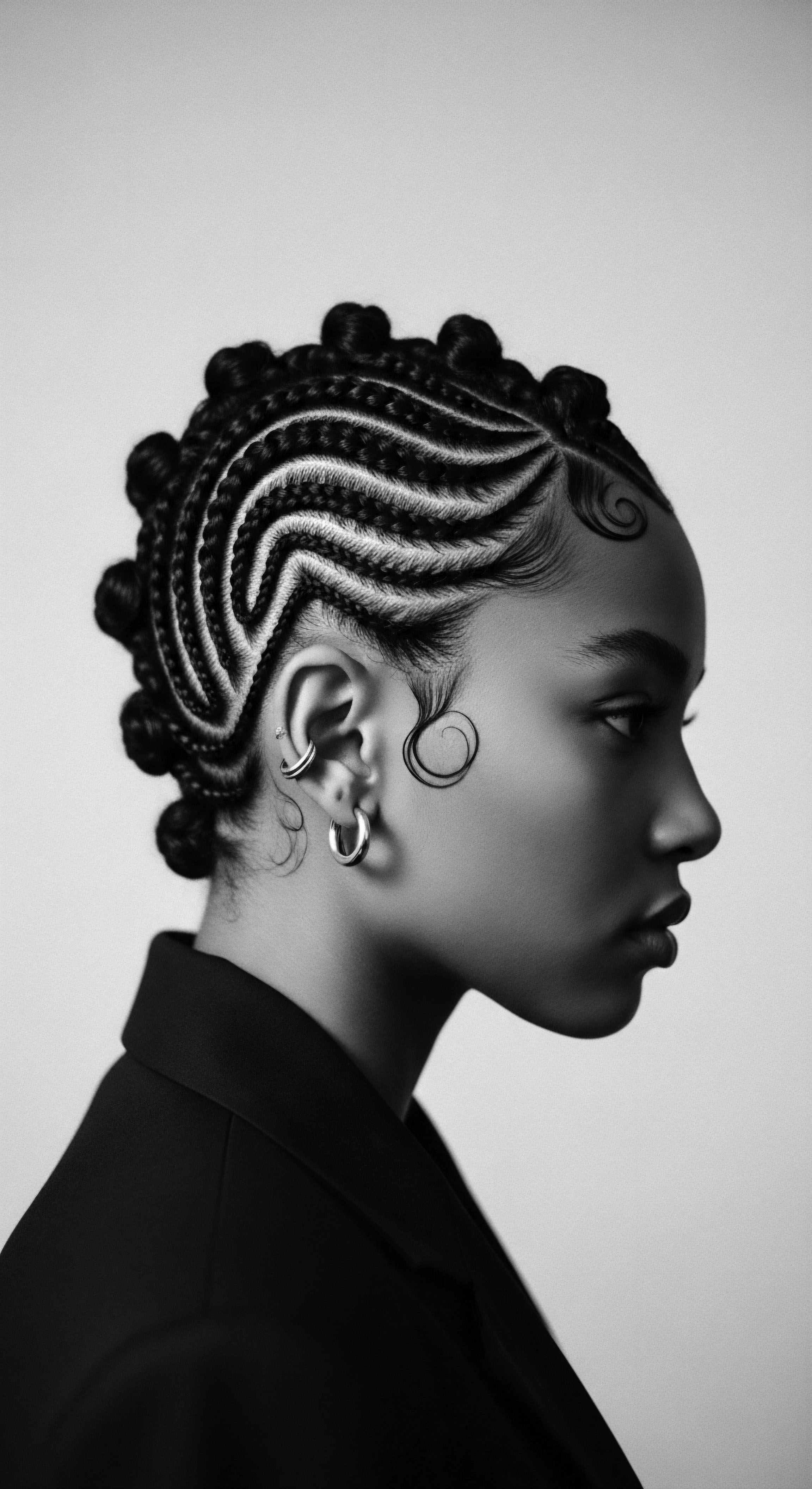
How Do Traditional Cleansing Methods Support Scalp Microbiome Balance?
Modern dermatology emphasizes the importance of a balanced scalp microbiome for preventing conditions like dandruff or folliculitis. Many traditional cleansing methods, which often avoided harsh detergents in favor of milder, plant-based cleansers or even clay washes, likely contributed to maintaining this delicate balance. These gentler approaches minimized stripping the scalp of its natural oils and beneficial microbial populations. For example, rhassoul clay, used in parts of North Africa, absorbs excess oil and impurities without over-drying the scalp, a practice aligning with contemporary principles of gentle yet effective cleansing for sensitive skin and scalp conditions.
The intuitive selection of substances that maintained equilibrium rather than disrupting it points to a profound understanding of holistic wellness. (Byrd & Tharps, 2001, p. 112).
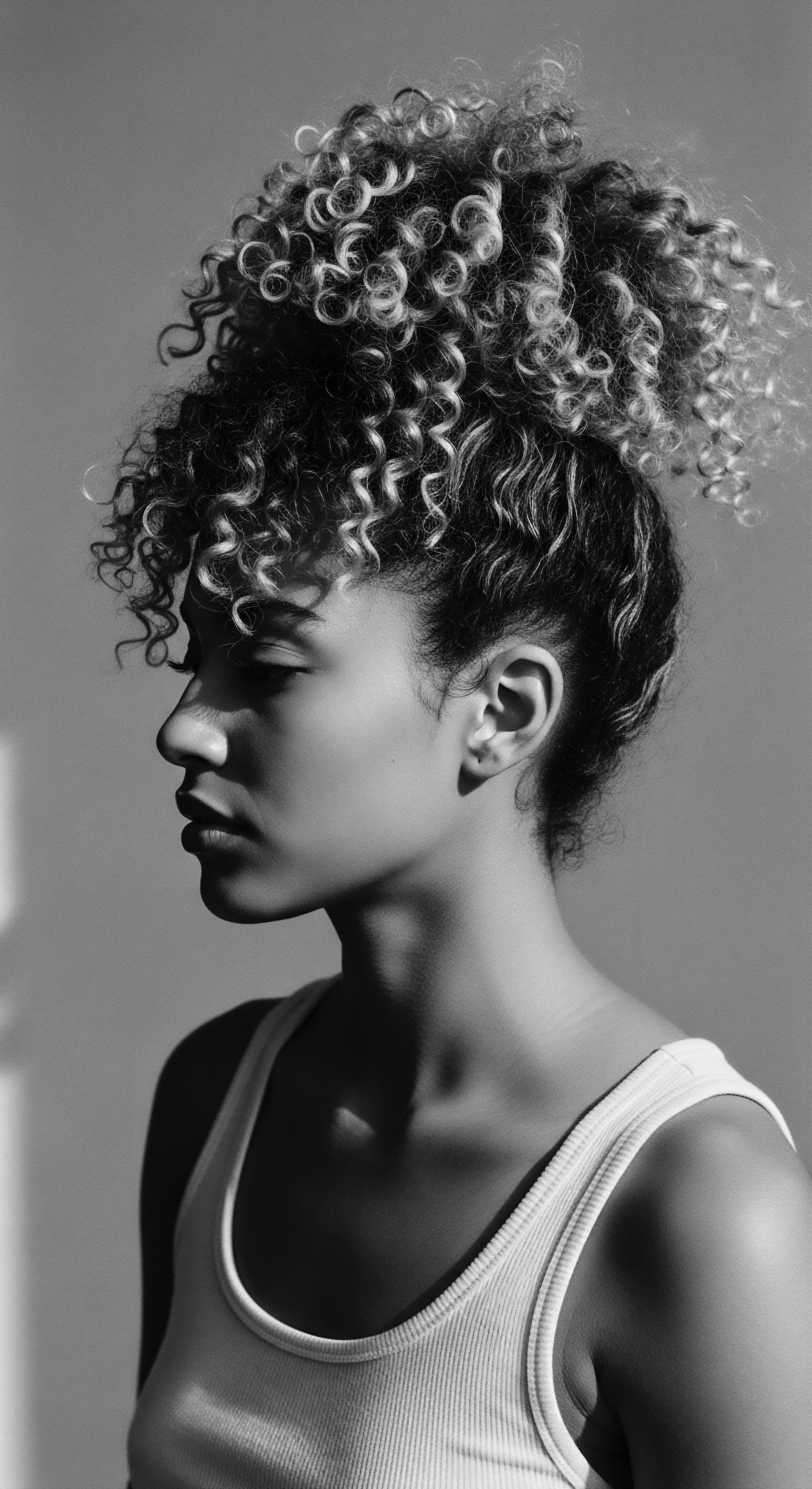
The Cultural Preservation of Knowledge
Beyond the pure science, the very act of preserving these methods is a cultural phenomenon worthy of study. The challenges faced by diasporic communities, including forced displacement and cultural suppression, meant that hair care practices became vital vehicles for cultural transmission and identity preservation. Mothers taught daughters, grandmothers guided granddaughters, not just techniques but also the underlying philosophy of care, self-acceptance, and resilience.
This intergenerational relay of knowledge, often through oral tradition and lived demonstration, ensured the survival of these invaluable practices even when formal education systems overlooked or denigrated them. This collective memory, a profound repository of experiential data, represents a unique historical case study in the power of cultural memory to sustain practices later validated by empirical science.
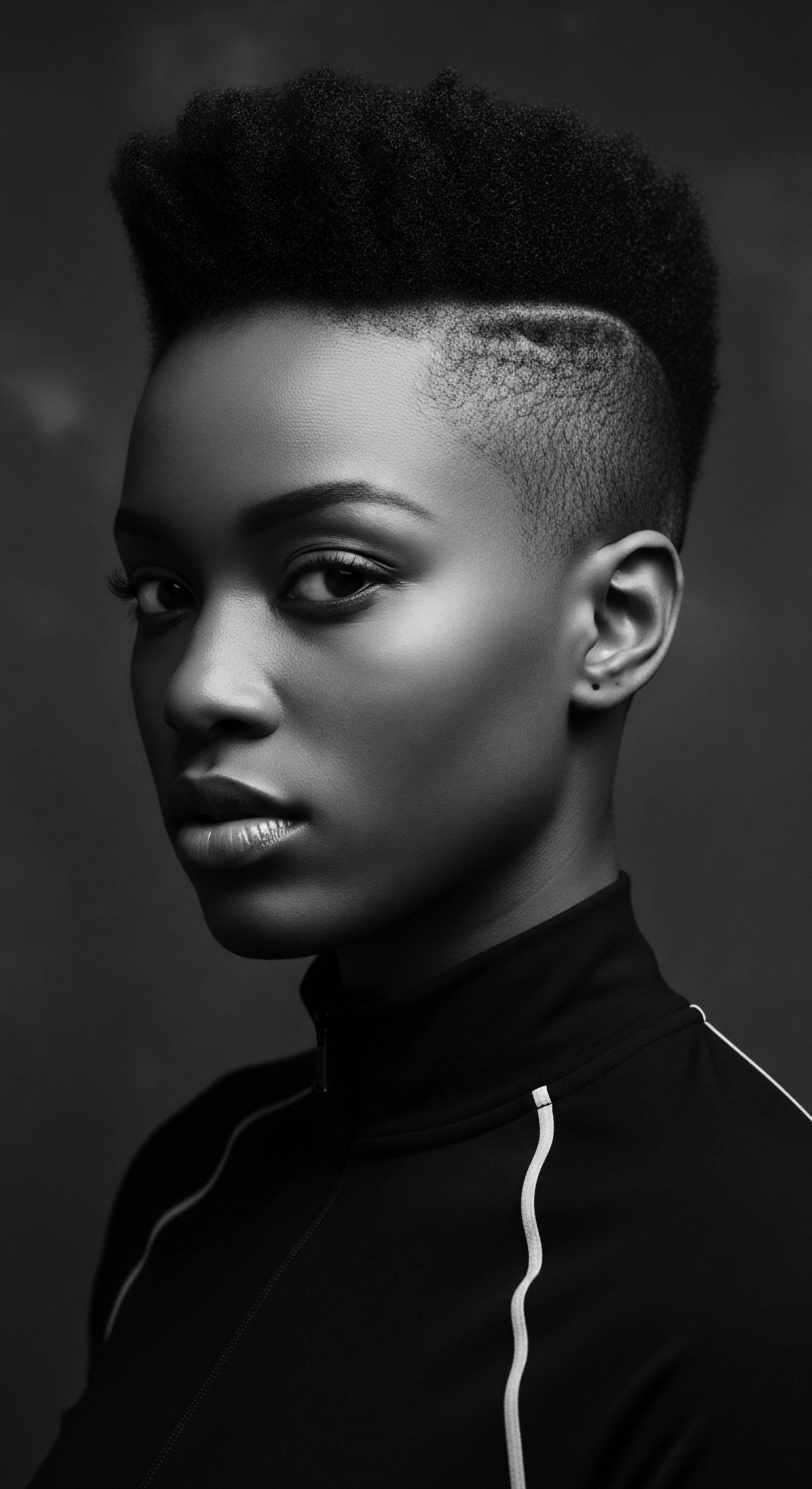
Reflection
The journey through the scientific validation of traditional textured hair care methods from the diaspora reveals a profound truth ❉ the wisdom of our ancestors was not merely superstition, but a deeply informed, often intuitive, understanding of biological principles. Each application of oil, each patient braid, each night’s protective wrap carries within it centuries of accumulated knowledge, perfected through countless repetitions and observations. It is a heritage of ingenuity, resilience, and an unwavering connection to the natural world.
Our textured hair, then, becomes more than just a crown; it serves as a living, breathing archive, where the soul of each strand connects us to a past that continually shapes our present and informs our collective future. To honor these practices is to honor ourselves, our lineage, and the enduring power of inherited wisdom.

References
- Byrd, Ayana D. and Lori L. Tharps. Hair Story ❉ Untangling the Roots of Black Hair in America. St. Martin’s Press, 2001.
- Journal of the American Academy of Dermatology. “Effect of oils on hair fiber.” 2017.
- Robins, Gayle. Egyptian Mummies ❉ Exploring Ancient Egyptian Funerary Customs. Kegan Paul International, 1994.
- Sachs, William. The World in a Bowl of Tea ❉ Healthy Hair, Healthy Life. Self-published, 2010.
- Davis, Angela. African American Hair Care ❉ Past, Present, and Future. University of California Press, 2005.
